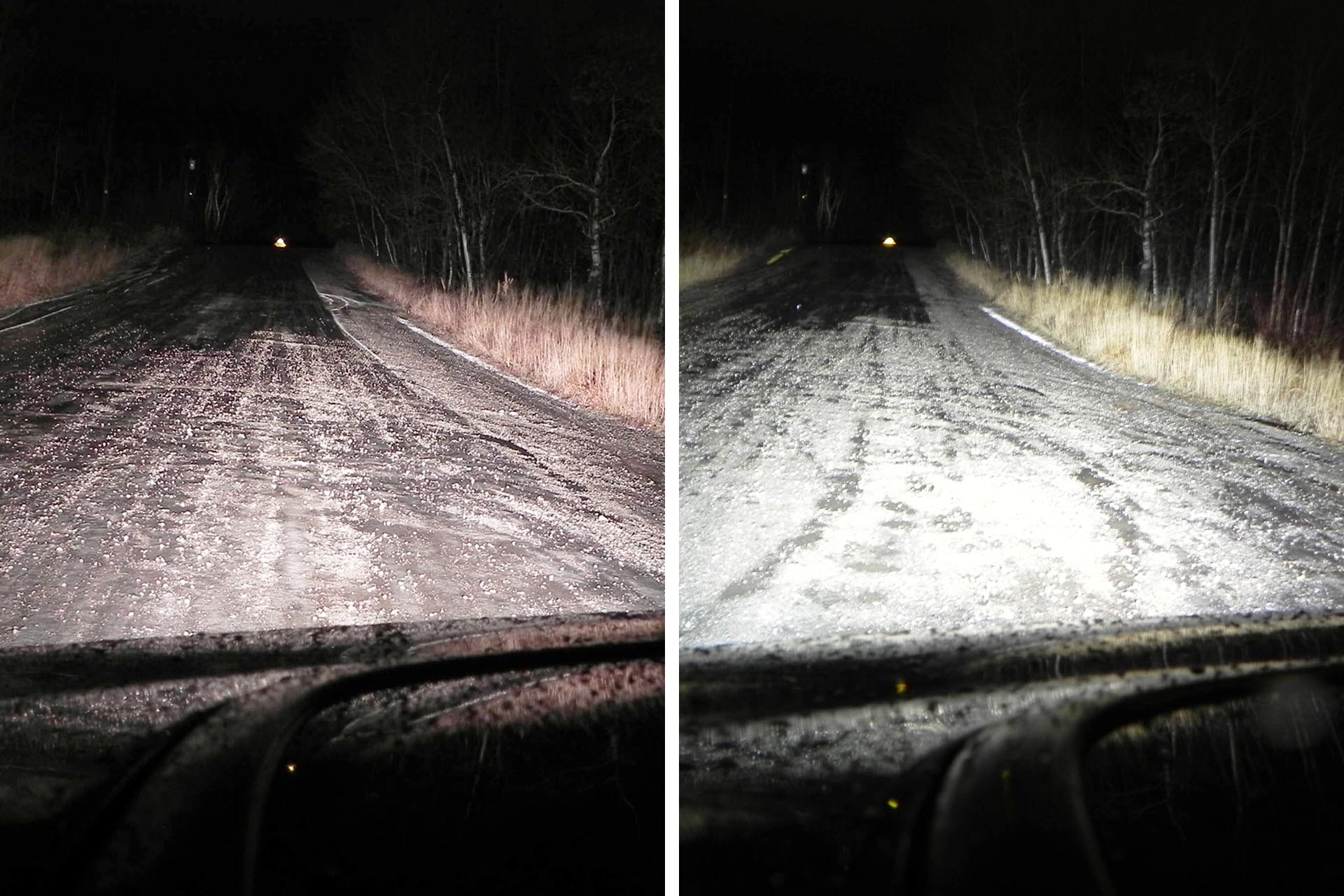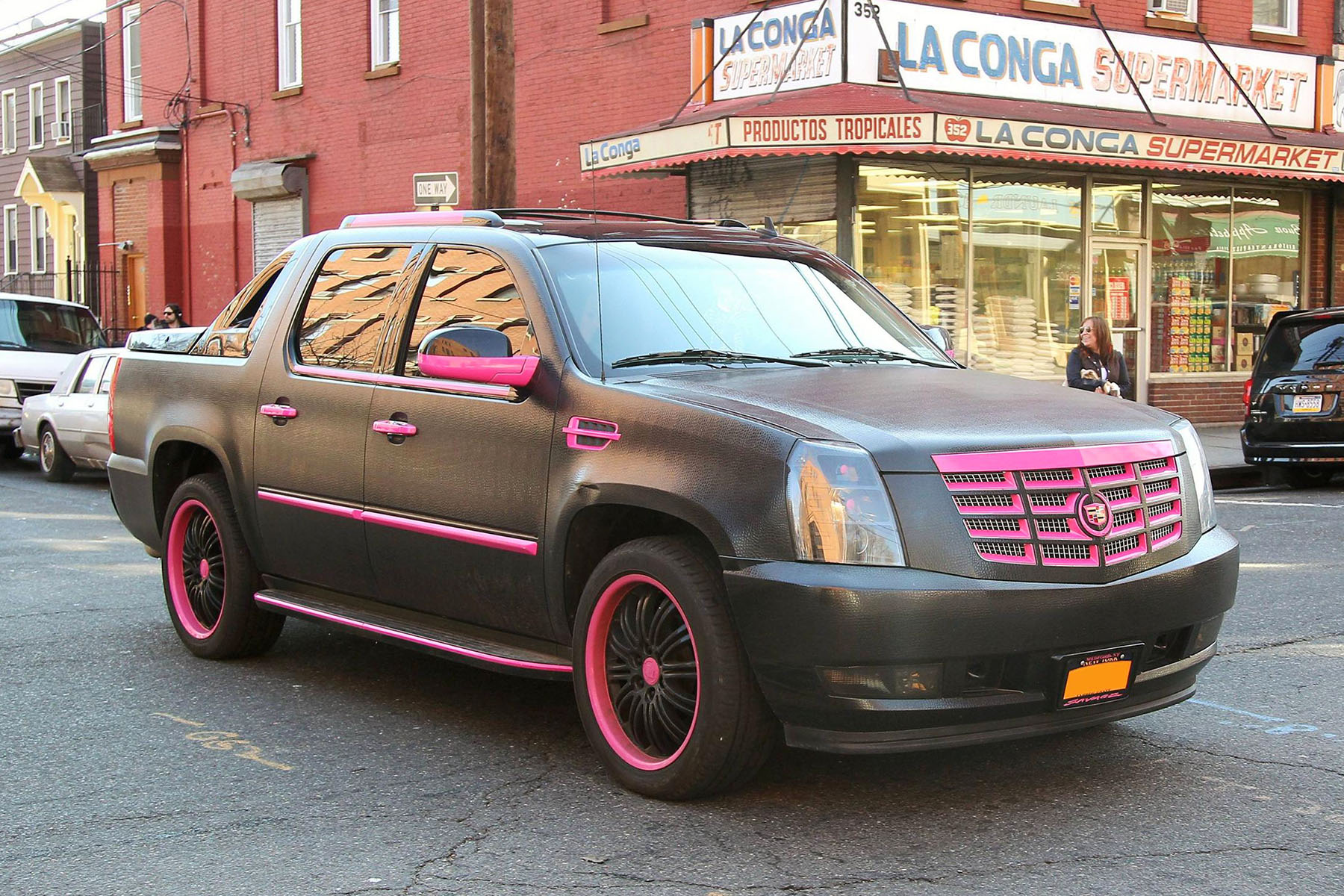Vehicle modification is the core of a multi-million-dollar industry, an entire automotive scene, and a wholesome pastime for enthusiasts across the country. Thousands of Canadian drivers have modified their vehicles with custom suspension components, wheels, performance parts, electronics, and more. Many of them enjoy their ride with no issue.
Thing is, not all modifications, or modified vehicles, are built the same. And for the average used-car shopper unfamiliar with the world of vehicle modification, buying the wrong modified used car can result in problems, headaches and issues – especially if the modifications to the ride in question were carried out with low-quality parts and installation.
If you’re in the used-car market, and if you’re not an enthusiast shopper experienced in the world of vehicle customization, here’s a look at how to check for the current or former modification of four key vehicle systems, and what to avoid on your potential used ride.
Aftermarket Lighting

The Gist
Drop-in xenon lighting kits, light-bars, tinted bulbs, LED headlights, tinted lenses and even aftermarket fog or rally lamps are popular across multiple vehicle genres, and especially with off-roaders, and compact import tuners. With the goal of increasing lighting output, generating a more upscale after-dark lighting signature and dialing up the looks, presence and functionality of a ride, the popularity of non-factory lighting upgrades has exploded in recent years.
What to Avoid
Though numerous lighting upgrades are safe and trouble-free, the market is flooded with low-quality, low-budget lighting implements that can cause more harm than good. Cheap parts and low-quality wiring, possibly combined with non-professional installation, can be a nightmare waiting to unfold. Poor wiring connections and relays, for instance, can cause frustrating non-functionality, inconsistent performance, component damage to other vehicle systems, or even lead to an electrical fire.
Further, some lighting modifications may be illegal in your locale – so be sure to do your homework so you don’t wind up with a ticket. If the headlights in the ride you’re considering shine a vivid artificial blue color, chances are they’re illegal. Improperly installed lighting can also inconsiderately blind other motorists after dark.
How to Check
If the vehicle you’re considering has aftermarket lighting upgrades, be sure to ask the seller if they have supporting documentation, including any warranty coverage, as well as where the upgrades were installed. If they were installed by the seller, ask to see the wiring, relays, fuses and other components. Unless the install job is virtually invisible, that is, with wiring routed, secured and protected properly, you may be best to move to another unit.
Helpful to Know
Properly installed lighting modifications should typically include relays and shrink-wrapped wiring connections, wrapped in electrical tape, for security and protection. Professional installation should be sought out for maximum peace of mind. Signs of a poor-quality wiring install include wires routed in odd locations, typically on their own, and typically attached directly to the battery terminal. Proper, professionally installed wiring should be fully protected, attached securely and not left hanging anywhere, and routed carefully so as not to come within proximity of any moving or hot parts under the hood.
Non-factory Wheels and Tires

The Gist
Millions of cars the world over roll on aftermarket wheels and tires, with drivers enjoying enhanced looks and handling. A wheel and tire upgrade is a great and effective way to boost the style and performance of a car, though quality parts, properly sized for the application, are key.
What to Avoid
A cheap set of wheels and tires, or a set that’s the wrong size, or of poor quality, can cause problems. Low-quality wheels can corrode, crack, leak, and become damaged more easily, and the internet is full of examples of how some very low-quality wheels, typically sold on price alone, can fail outright, causing an accident. Is the set of aftermarket wheels on the ride you’re considering from a reputable manufacturer? Or from a warehouse in Kazakhstan? Are they strong enough to support the weight of the vehicle in question, or is the owner selling a heavy pickup riding a set of wheels designed for a mid-sized car?
How to Check
Ask the owner how old the wheels are, whether they can provide a bill of sale, and whether the wheels have any remaining warranty. Ensure all tires are inflated properly; scrutinize the condition of the wheels, looking for excess corrosion, signs of cracking or chipping; and feel around the inner portion of the wheel for signs of damage, too. A mechanic should have a close look, for maximum peace of mind, if you have any suspicions.
Helpful to Know
Larger-than-factory wheels can put added strain on vehicle suspension and driveline components, and it’s typically illegal for a road-going vehicle to have wheels that protrude past the vehicle’s fenders. If one or more tires frequently require re-inflation for no apparent reason, the wheels may be to blame. In many cases, shoppers are best to have the seller install factory wheel and tire equipment back onto the ride before purchasing.
Non-factory engine control / cranked-up boost

The Gist
The recent proliferation of turbocharged cars has led to a rapidly growing trend: many owners use non-factory engine management software to turn up the boost, effectively running the turbocharger (or supercharger) at higher-than-factory output, to create more power.
What to Avoid
Unless you’re well experienced in the world of engine tuning, non-factory engine and turbocharger management is almost never a good idea, especially in a newer used car. Higher-than-factory boost levels can negatively affect the durability and lifespan of the compressor, the engine itself, and the vehicle’s driveline and fuel system.
Further, in most cases, turning up engine boost voids the vehicle’s warranty – and manufacturers go to great lengths to be able to detect the current or former presence of non-factory engine tuning software, and may void a vehicle’s warranty without the seller even knowing. Even if the seller programs the boost level back to factory parameters, the warranty will likely be in jeopardy regardless.
How to Check
Ask the owner if the engine or ECU has ever been re-flashed or reprogrammed to run non-factory software, or if they’ve ever “turned up the boost”. This type of modification is typically electronic in nature, and therefore, has few, if any, clues that can be detected visually. But there’s a defense: have the vehicle in question checked out by its dealership, and ask the service technician to scan the ECU and confirm that the warranty isn’t “black flagged”, explaining your concerns, if you have any.
Helpful to Know
In newer vehicles, some dealers place a small identification sticker or tag in a pre-determined location under your vehicle’s hood, every time they update the (factory) software in the vehicle’s Engine Control Unit, or ECU. That ECU is tied to the unique VIN number of the vehicle in question, and it counts how many times it’s been reprogrammed. This count cannot be reset or manipulated.
As such, when the vehicle requires warranty work, determining the integrity of factory programming is simply a matter of matching the number of ECU reprogramming events from the computer itself to the number of reprogramming validation stickers or tags affixed to the vehicle.
In a nutshell, if the ECU shows five reprograms, but only three stickers are present, then non-factory software has been applied at some point. Even if that software is removed (which ups the ECU reprogram count), your used ride’s warranty is probably nullified.
Non-factory suspension

The Gist
Whether it’s a lowered, stanced or slammed compact car or luxury sedan, or a jacked-up or lifted truck or SUV, an entire industry exists to support folks who want to customize the suspension in their ride. Done properly, and with quality parts, properly-scaled suspension mods can be little cause for alarm, and can enhance the looks and handling of a vehicle. Conversely, poorly modified suspension components, low-quality parts and unprofessional installation can lead to numerous problems on all types of vehicles.
What to Avoid
Excessive lowering in a car can cause tires to contact the vehicle body, especially in the event of a flat, which can cause damage, or a loss of control. Excessive lifting in a truck or SUV can cause axle seals to leak and CV joints to wear at an accelerated rate. In any vehicle, improper lifting or lowering can accelerate tire wear, negatively affect handling, and quickly degrade the lifespan of other suspension components like ball joints and bushings.
How to Check
A full check-over of your potential ride’s suspension by a mechanic is ideal to determine its condition, whether the vehicle has modified suspension parts now, or has in the past. On a larger truck or SUV model, have the technician pay special attention to axle seals, CV joint boots, bushings and ball-joints. On a car you suspect may have been lowered (or, presently is), the same mechanic can check the integrity of all suspension parts, the vehicle floor-pan for signs of contact with the road, and the condition of the steering rack and associated components, which can also be affected by altering the vehicle’s suspension geometry.
Helpful to Know
Many suspension modifications can throw a vehicle’s alignment out of whack, and signs of a poor alignment are easy to spot: look at the tires. If they’re worn heavily on one side or the other, not evenly across, you’ll need to have the vehicle’s alignment addressed – as well as a search for a new set of tires, for maximum safety.

